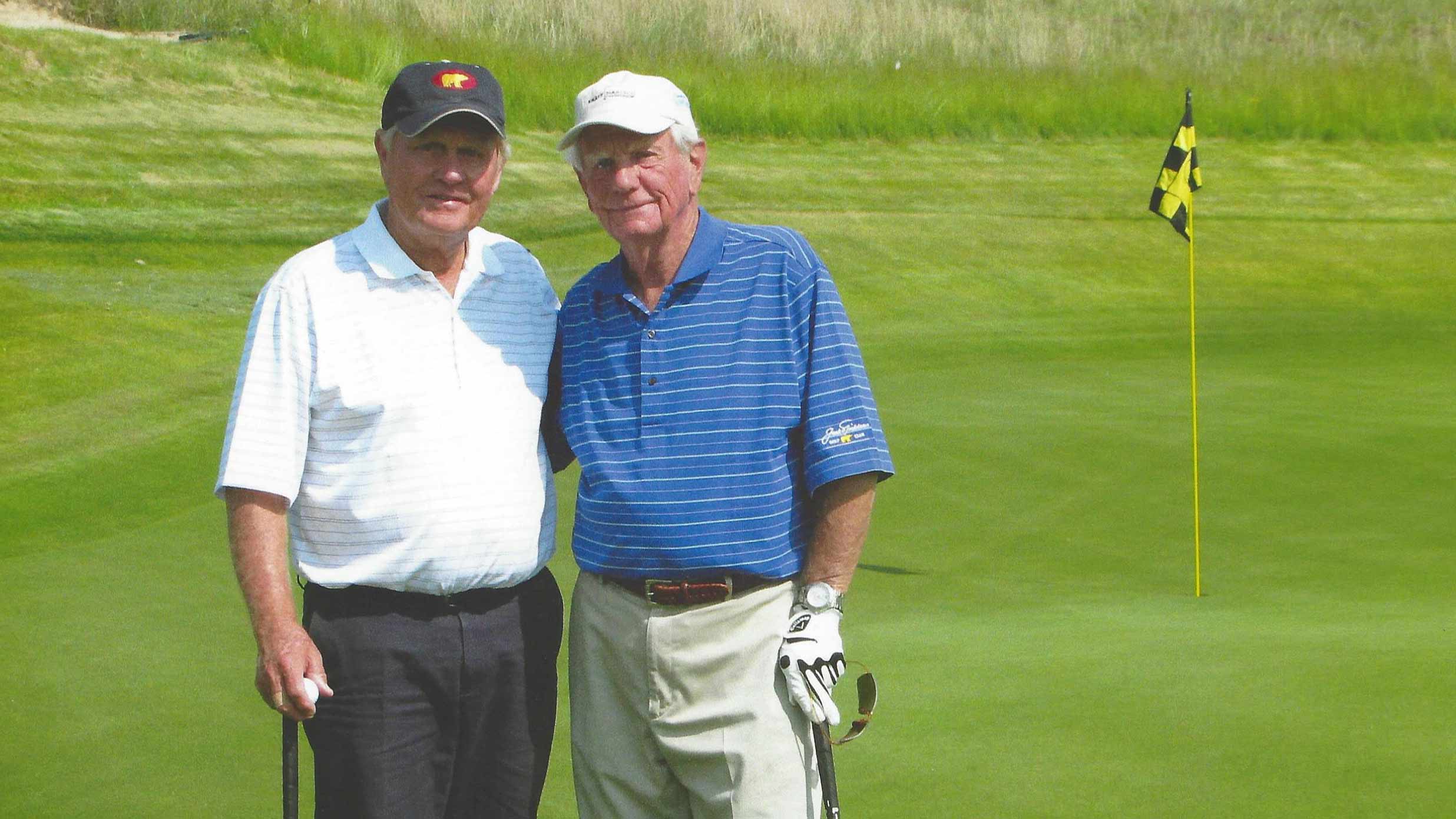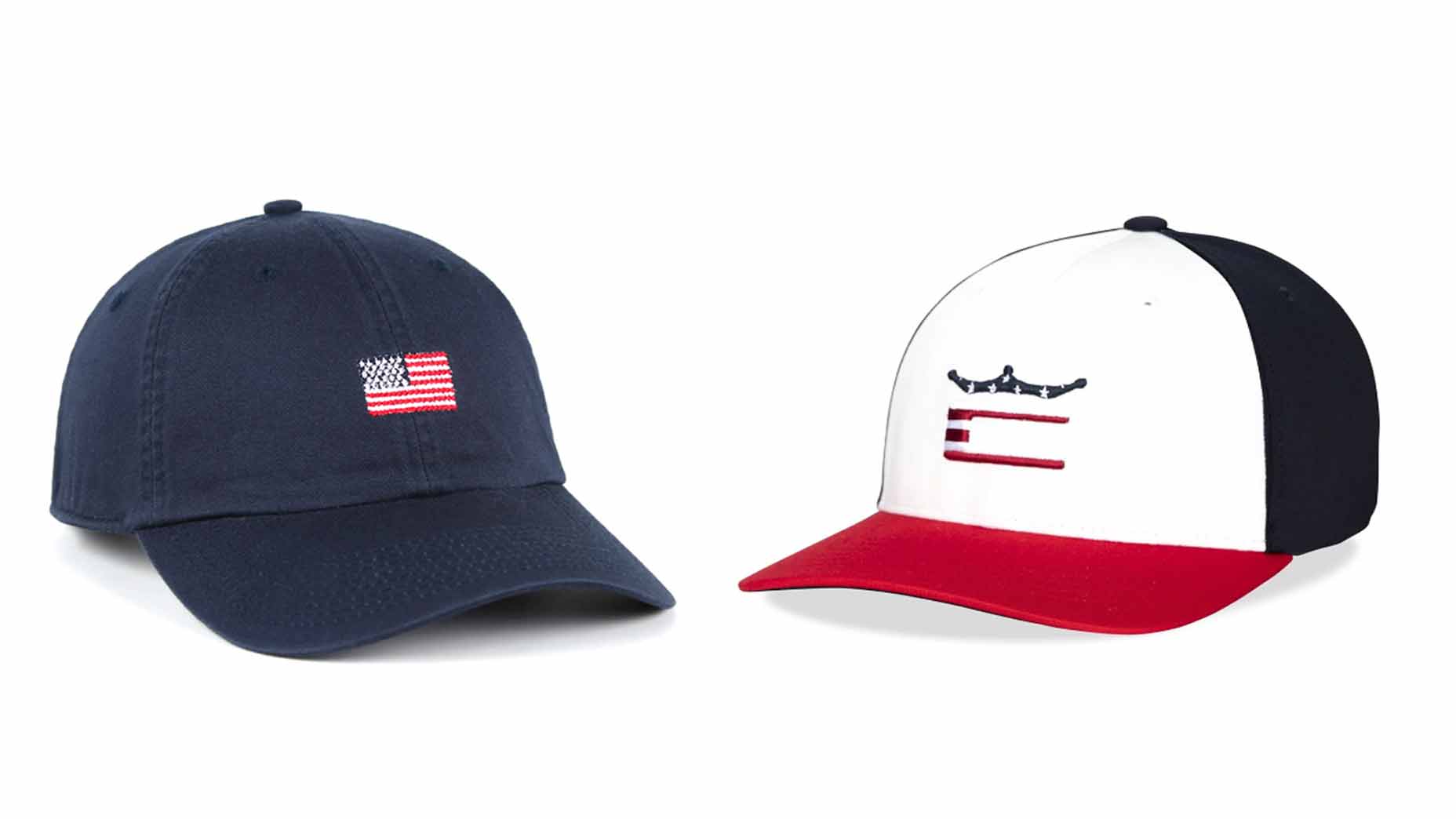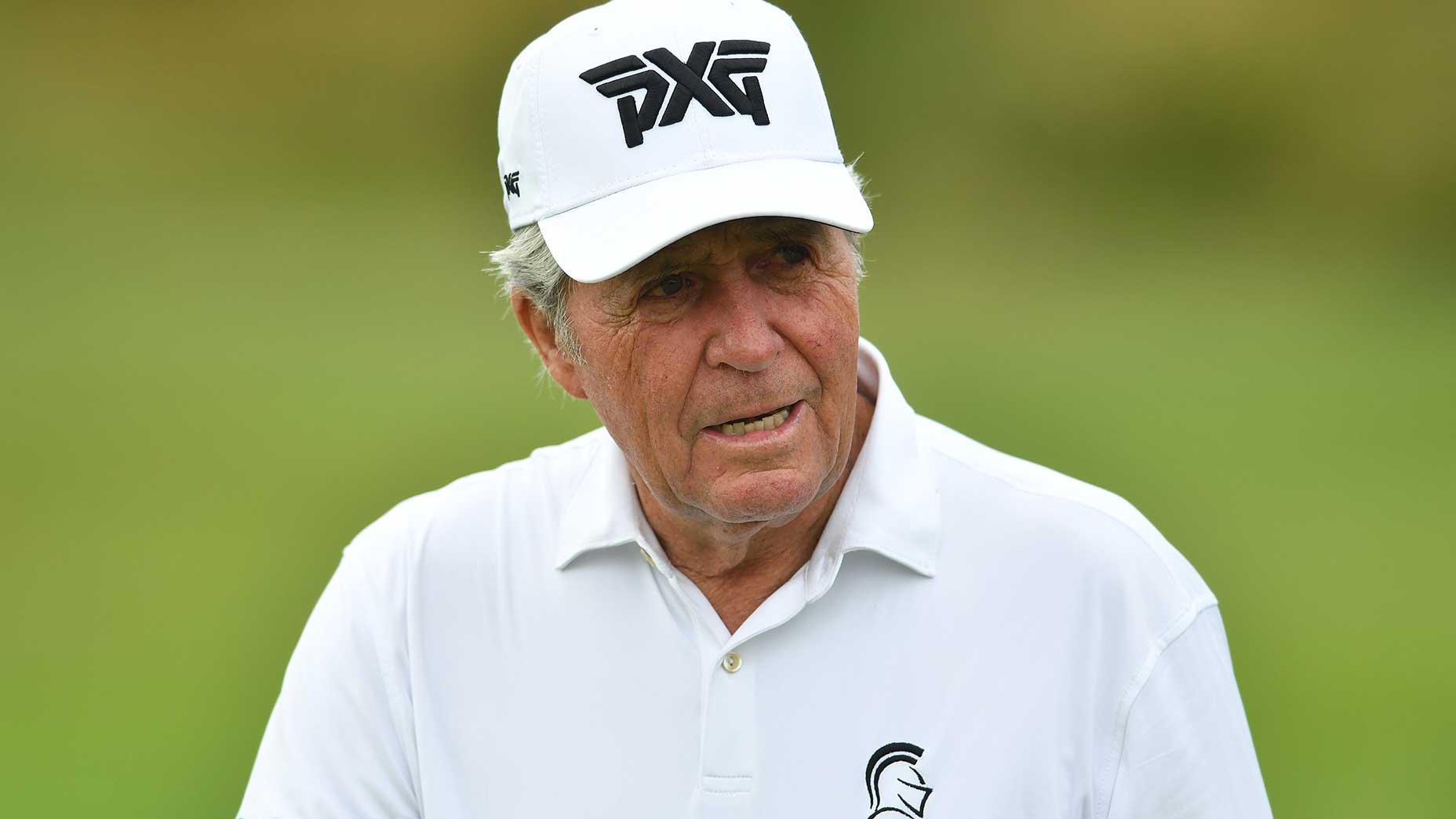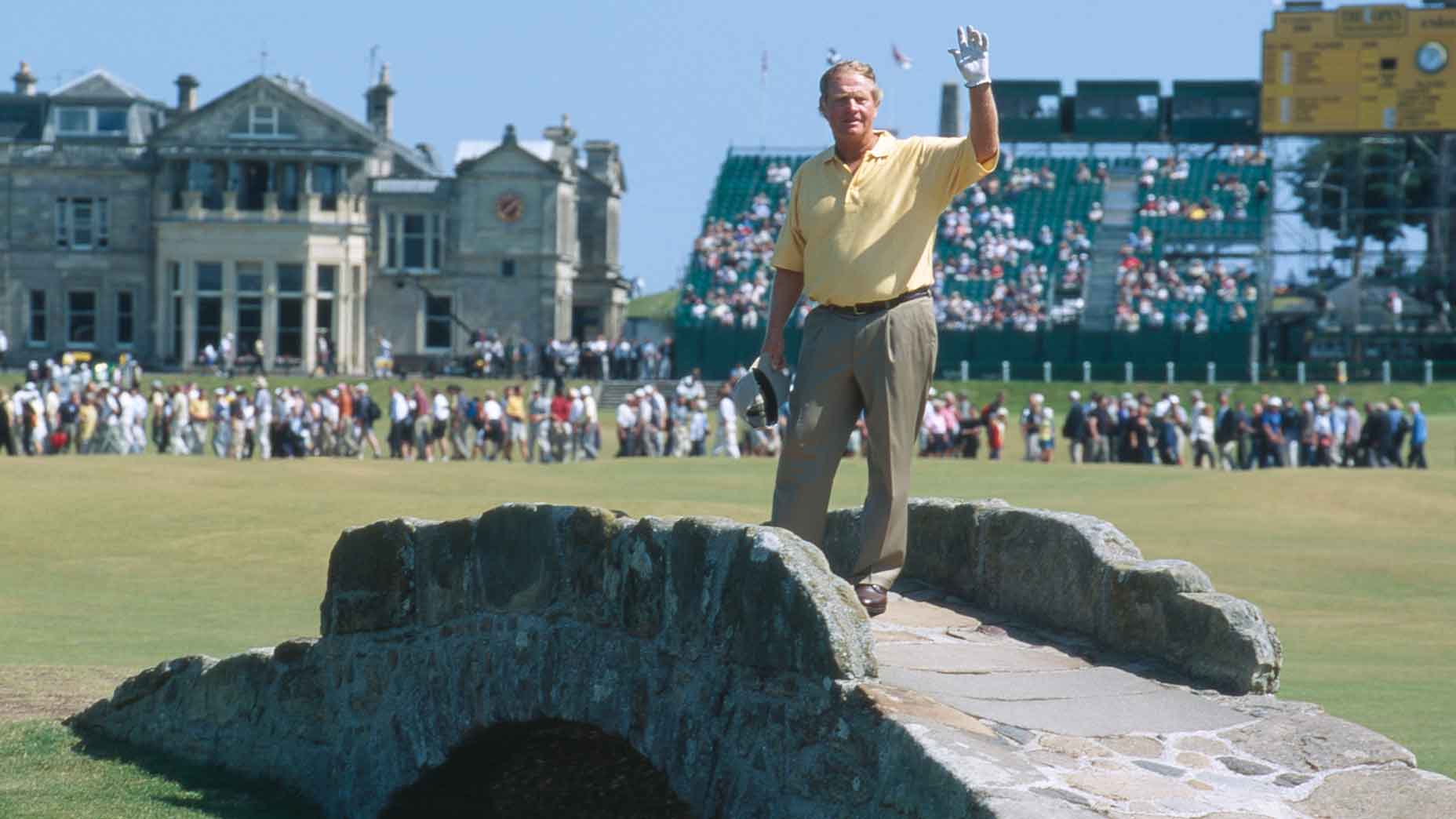Higher Learning: What growing up around Tour legends taught me about golf and life

The author gleaned wisdom from the likes of, clockwise from top left, Patty Burg, Bob Toski, Arnold Palmer, Marilynn Smith, Gary Player and Jack Nicklaus.
getty images
There is never a good time to get the shanks, but some occasions are more traumatic than others, like, say, during the pro-am at the 1966 Doral Open.
It was there that I witnessed a poor fellow hit one mortifying hosel rocket after another. I’ll never forget it because not only was I that player’s caddie but I was also his son. Needless to say, the experience did not become one about which my father and I warmly reminisced at holiday gatherings.
The other two amateurs on our team that day winced every time Dad sent another ball skittering off his club like a wounded quail, and it was clear the spectacle was affecting their own play. The same could not be said of our pro, Chick Harbert, who even while trying to offer my father advice stayed laser-focused on his own game. Harbert — winner of the 1954 PGA Championship and six other Tour titles — signed for a cool 66, besting every other pro in the field, including Arnold Palmer and Jack Nicklaus.

After the round, Harbert, sensing I was rattled, pulled me aside.
“Don’t get down on your dad,” he said. “Time and again I’ve known some really good amateurs who don’t perform well with the added pressure and excitement of a PGA event. It’s not the same as playing with the fellas at your home course.”
After thanking Harbert for his kind words, I asked how he could play so well in the company of another player melting down.

“Whatever the stakes are, to consistently perform at a high level I take a deep breath before each shot, exhale slowly and then think of only one thing: tempo,” he said. “If I let muscle memory take over and swing with my regular tempo, it doesn’t matter what others are doing.”
That pearl of wisdom was one of many that I gleaned from golfing greats during my youth, a bedrock of game-improvement knowledge and lessons in human nature that I still lean upon today.
My access to the titans of the game came through the military clout of my father, Lt. Col. Joseph D. Kelly. In the 1960s, Homestead Air Force Base — just south of Miami and about 20 miles from what was then known as Doral Country Club — sported a nifty little nine-hole course. No expense was spared to keep it in Augusta-like condition, thanks largely to the fact that my golf-addicted father (he was a 10-handicapper when not shanking!) served as Deputy Base Commander.
Dad offered select pros who missed the cut at the Doral Open each March a weekend fete at the base; the invitations were extended through Frank Strafaci, Doral’s then-director of golf. The pitch: A military limo would pick up the pro at Doral Friday evening, deliver him to the base, put him up at the ritzy Visiting Officers Quarters, provide all meals at the Officer’s Club, drop him off at the airport Sunday or Monday if he flew in, and hand over a check from Uncle Sam for $500. In return, the pro would put on a clinic Saturday morning and play nine holes with military brass that afternoon.
The same “weekend bash” offer was also made at other times throughout the year via Strafaci to men and women pros he knew who were visiting South Florida. In return, Strafaci enjoyed base privileges whenever he wanted to get away for a few days with friends.
That’s where I came in. Besides having an after-school job at the base course cleaning clubs and retrieving range balls, I caddied for the visiting pros. Also through Strafaci, I looped for a few players who needed a hand at the Doral Open. Nepotism has its benefits.
Here are a few of my more memorable encounters from those halcyon days:
Gary Player
On Doral’s long par-3 12th hole, Player badly pulled a long iron left of the green and in the rough. From his lie, the pin sat on a piece of the green sandwiched between bunkers short and long. I watched Player walk to the green and carefully survey the situation, and I gasped when he intentionally chipped the ball into the front bunker. Player blasted to about three feet and made the putt.
Walking to the next tee, I saddled up to him and asked why he didn’t try to lob the ball onto the green. He smiled, put his arm around my shoulder and spoke to me not condescendingly as a teacher might instruct a student but instead respectfully, golfer to a golfer.
“The grain was going away from me on the green and the chances of stopping the ball before it ran into the far bunker were slim to none,” he said. “So instead I chose a flat portion of the front bunker and skipped the ball into there so it wouldn’t as likely bury. I’m a very good bunker player, so I was pretty sure I could get up and down from there in two.”
Lesson learned: Play the odds and don’t get greedy. There’s no shame in taking bogey if it means avoiding the potential for a double bogey or worse.

Marilynn Smith
Smith helped form the LPGA and won 21 titles on the ladies’ tour, including two majors, so she certainly didn’t need my help when I landed on her bag during a round on the base course. While walking the fairway on the 2nd hole, we heard a staff sergeant in the gallery make several unflattering remarks about Smith, inferring she wasn’t ladylike. I felt like dropping Smith’s bag and clocking the dimwit, but Smith calmed me down. “I’ve found it best just to ignore people like that,” she said. “Men like him usually have endowment issues — and I’m not talking about money.” We shared a big laugh, but it didn’t stop me from glaring menacingly at that sergeant to quiet him the rest of the round.
Lesson learned: People can only get to you if you let them.
Jay Hebert
The most personable pro I’ve ever met, this amiable Cajun won the PGA Championship in 1960 just as his brother Lionel had done three years earlier. The 4th hole at the base course was a straightaway par-4 with a firm, elevated green. Hebert had an 8-iron to the flag, and he asked where he should aim. Figuring all tour pros can back up or cold-stop iron shots at will, I told him to fire at the pin. His ball landed next to the flag and ran over the green. After getting up and down for par, Hebert said to me, “Doug, this green is like a billiard table and you have to hit it short of the pin and let it run — there’s no other way.”
Lesson learned: Not even pros can defy topography, so take what each hole gives you and don’t expect more
Bob Toski
A regular winner on the Tour in the 1950s, by the mid-1960s he was mainly a teaching pro based at the exclusive Ocean Reef Country Club in Key Largo. After toting his bag and watching his play at the base course, it amazed me how far such a short, slight fellow could boom the driver but not his irons.
At the 6th hole, a 160-yard par 3, Toski asked for his 5-iron. He noticed me cringing and asked why.
“Mr. Toski, I usually hit an 8 here,” I said.
Toski smiled.

“That’s because you probably swing the same way with all your clubs. I don’t hit my irons very far but watch as I cut this 5 into the right-to-left wind so it holds direction and stops dead.” He did exactly that, delivering a gorgeous fade that fluttered to the green like a leaf and settled four feet from the pin.
Lesson learned: After observing Toski, I realized that I swung my irons like battering rams. I slowed down my tempo with my irons and started hitting more greens in regulation.
Another lesson learned: After finishing the round, Toski asked me if I wanted to have either his 1 iron or $10. I took the $10. The next day I told a friend about it.
“Are you crazy?” he said. “I’d have given you $50 just to say I owned one of Toski’s clubs.”
I’ve made smarter choices since then.
Arnold Palmer
The King was renowned for taking his time to sign autographs. I’d heard other celebrities at times gripe about signing autographs and how they avoid them by walking quickly, because if stopping the crowd keeps getting larger.
At one point I found myself next to Palmer in the Doral locker room. I asked him if he keeps moving when seeing autograph seekers. His brow furrowed. “Why would I do that?” he asked. I told him the reason I’d heard and he shook his head. “No, I do the opposite — I stop and sign every single autograph requested unless I have a good reason to leave,” he said, “and on top of that I don’t just scribble my signature, I take the time to write it neatly.”
Lesson learned: Be humble, thankful and thoughtful of others, even when it might inconvenience you.


Patty Berg
Another LPGA pioneer, Berg won 15 major titles in her incredible career. She was conducting a clinic at the HAFB driving range with about 250 onlookers. “Tee it high and let it fly,” she’d say just before whacking several 250-yard drives.
Being a smart-ass 15-year-old, I woofed to a friend in the gallery that teeing it too high will result in skied drives.
Berg heard me. “Okay, young man, step up here.”
I did as she asked and she handed me her driver. “So, show us how you do it.”
My hand shook as I tried to plant the tee. I took a swing and the clubhead hit about four inches behind the ball. Everyone got a good laugh at my expense. Later when caddying for Berg, I apologized and she said, “We all live and learn. Whenever I get a heckler during a clinic, I let him feel how different it is hitting a shot with a lot of people watching — he always duffs it.”
Lesson learned: First off, never interrupt an instructor. Second, performing under pressure in front of a large group isn’t as easy as it looks.
Julius Boros
I never caddied for Boros, but as I walked up the 18th fairway looping for Tommy Jacobs at the Doral Open, I saw Boros fishing near the 10th green. Fishing! I bid farewell to Jacobs after the round, raced to my car to fetch a rod and some lures, and joined Boros. At that time they allowed fishing in the Doral lakes, and many Tour players took advantage.
Boros was receptive to my joining him and we chatted while casting and occasionally catching and releasing small bass. Soon enough, Sam Snead came barreling toward us in a golf cart sporting several rods and a tackle box.
Boros laughed and I asked what was so funny.
“Sam’s ego is such that he can’t stand to lose whether it’s golf, Ping-Pong, fishing or anything else — I’m that way, too.”
Indeed, Sam out-fished us and playfully made that clear by the time darkness settled in.
Lesson learned: Ego can be a good thing when channeled positively; it can separate good players from great players.

Speaking of Sam Snead…
I enjoyed being in the players’ locker room at Doral as much as being on the course. After a Thursday round looping for Dave Marr when I was 19, I sat on a bench as Marr changed shoes. Snead was sitting nearby and talking to his nephew J.C. Snead, who wasn’t playing too well and complaining about having the yips.
Sam said, “I notice you spend a lot of time on the practice range but hardly at all on the practice green. We all get the yips at times, so practice your putting more and quit bitching — all that does is make the short ones get into your head even more.”
J.C. left the locker room and hit the practice green for hours. The next day, in the second round, he needed just 25 putts.
Lesson learned: When the voice of success and experience speaks, heed it.
Jack Nicklaus
The Golden Bear is often described as austere and all-business on the course, but I’ve observed a different, lighter side of him.
I once saw Nicklaus hit a drive on Doral’s par-5 1st hole into the left rough. Obscured by trees, his next shot, a punch-out, ran through the fairway and into the rough on the right side.
As Nicklaus strode to his ball, I heard him call out to his playing partners, “How are the fairways today?”
On another occasion, Nicklaus faced a delicate pitch to a tight pin and someone in the gallery blurted, “Looks like a tough shot.”
To which Nicklaus replied, “Not to worry, my sparkling wedge game will save the day.”
We all laughed, and then naturally Nicklaus went into full concentration mode and stoned it.
Lesson learned: Even the greatest player the game has ever known engages in self-deprecating humor at times. Between shots, keep the mood light.
Not all my memorable repartees with the pros occurred during my wide-eyed teen years. Having moved from Miami many years after my dad retired from the Air Force, I happened to be in the city on a business trip during the same week as the Doral Open. I couldn’t resist dropping by.
It was a hot, sweaty afternoon and I noticed Bob Goalby walking off the 18th green with an uncharacteristic frown. In an effort to cheer him up a bit, I moseyed over and said in a commiserating tone, “Hey, you don’t look so good.”
Goalby glanced at me and retorted, “Neither do you.”
Lesson learned: Pick your moments.
Doug Kelly lives in Clearwater, Fla.. He is a long-time journalist, the author of three books and the co-host of a Tampa Bay radio show.













